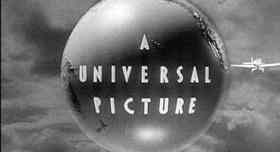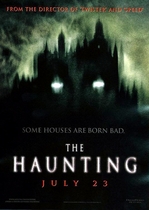Our editor-in-chief Nate Yapp is proud to have contributed to the new book Hidden Horror: A Celebration of 101 Underrated and Overlooked Fright Flicks, edited by Aaron Christensen. Another contributors include Anthony Timpone, B.J. Colangelo, Dave Alexander, Classic-Horror.com's own Robert C. Ring and John W. Bowen. Pick up a copy today from Amazon.com!
Universal Terror VI: Werewolves and Ravens
Universal studio's next horror film after Bride of Frankenstein was Werewolf of London, directed by Stuart Walker. The film was the first film dealing with Lycanthropy made by a major studio. The film follows Dr. Glendon (Henry Hull), who is bitten by a strange animal while in Tibet. In Tibet, he obtains the mariphasa lupina, a flower which only blooms under the moon. When Dr. Glendon returns to England the mysterious Dr. Yogami (Warner Oland) warns him that there are two werewolves in London right now. Yogami tells Glendon that the mariphasa is the only known cure for werewolfism. Dr, Yogami also warns him that a werewolf, instinctively kills what he loves the most. On the night of the full moon, Glendon transforms and kills a street girl.
Glendon urges his wife Lisa (Valerie Hobson) to stay in at night, fearing he might kill her. Lisa refuses to stay, so Glendon goes and locks himself up in a tavern. He transforms and escapes. He then goes to a zoo, attacks a zookeeper's mistress, and releases some caged wolves.
One night, Glendon attacks Lisa. Lisa's friend Paul (Lester Matthews) fights the werewolf off. In the daytime, Glendon goes to his lab for the flowers that can cure him. Yogami tries to steal the flowers, but night falls and Glendon transforms. The werewolf kills Yogami. The police show up and shoot Glendon. Dr.Glendon says "Thanks for the bullet" as he dies.
Werewolf of London was a film about werewolves, but it owed more to MGM's Dr. Jekyll and Mr. Hyde (1932), and Jack the Ripper than to folklore. Werewolf of London was made at the same time as Bride of Frankenstein. Valerie Hobson starred in both films, so a corridor was constructed for her between sets. Henry Hull's wife came to visit him on the set of Werewolf of London, but was misdirected to the Bride of Frankenstein set. She was told to go through the corridor to the right set. As she walked through the corridor she heard foot steps. It was Boris Karloff in full make up. He said, "Good morning Mrs. Hull," to her and she began to scream.
The task of creating the werewolf went to Jack Pierce. Pierce originally planned for Henry Hull's make up to be much more animal-like and shaggy. The idea was rejected because it was thought to be too ghastly for audiences of 1935 and Henry Hull refused to wear the uncomfortable make up. The final make up design was less beast-like and hairy. Jack Pierce devised a light reactive make up for Hull's transformation scenes. Filters were removed from the stage lights and the light caused the make up to darken. Pierce then applied different make ups, each more beast like than the previous one. A full camera dissolve made it into a complete metamorphosis. The sound of the werewolf's howl was created by blending the howl of real wolves with Henry Hull's own howl.
Universal would go on to make the most famous werewolf movie of all time, The Wolf Man (1941), starring Lon Chaney, Jr. Werewolf of London will always be remembered as a landmark in horror films. It was the film that started a whole sub-genre of the horror film.
Universal's last horror film of 1935 was the second film to feature both Boris Karloff and Bela Lugosi. It was The Raven and like the previous team-up The Black Cat, it borrowed its name from an Edgar Allen Poe story. The Raven tells the story of mad surgeon Richard Vollin (Bela Lugosi). Vollin is obsessed with the works of Edgar Allen Poe. He has constructed working replicas of torture devices from Poe's stories and adopted the raven as his talisman. Vollin becomes obsessed with one of his patients. The patient is the beautiful Jean Thatcher (Irene Ware). Jean's father, Judge Thatcher (Samuel S. Hinds) demands that Vollin leave her alone. Vollin is outraged and wants revenge for the insult. Criminal Edmund Bateman (Boris Karloff) comes to Vollin wanting plastic surgery. Instead of helping Bateman, Vollin horribly disfigures him. Vollin agrees to fix his face if he commits crimes for him.
Vollin throws a party inviting Judge Thatcher, Jean, and her fiancee Jerry Halden (Lester Matthews). At night, Bateman kidnaps Judge Thatcher and ties him to Vollin's replica of "The Pit and the Pendulum". Vollin kidnaps Jean and Jerry and puts them in a room with walls that gradually come together. Bateman wishes to stop the killing and shuts off the chamber, allowing Jean and Jerry to escape. Vollin shoots Bateman, but Bateman attacks Vollin and puts him in the chamber. Bateman dies from his gun shot wound and Vollin is crushed to death by the chamber. Jean and Jerry rescue Judge Thatcher and escape from Vollin's mansion.
The screenplay of The Raven had been worked on by seven screenwriters before the film began being made in March of 1935. Director Louis Friedlander (AKA Lew Landers) had only directed serial and adventure films, but showed skill for horror films by directing The Raven.
Bela Lugosi has more screen time than Boris Karloff in The Raven. Lugosi is clearly the star of the film, but he was not treated that way. Despite his role, Lugosi was only paid $5,000 while Boris Karloff was paid $10,000.
The Raven like The Black Cat, is a story of madness, lust, and torture. The Raven proves that Boris Karloff and Bela Lugosi will forever be the kings of horror.
| Universal Terror | ||
|---|---|---|
| << Part 5 | Part 6 | Part 7 >> |








